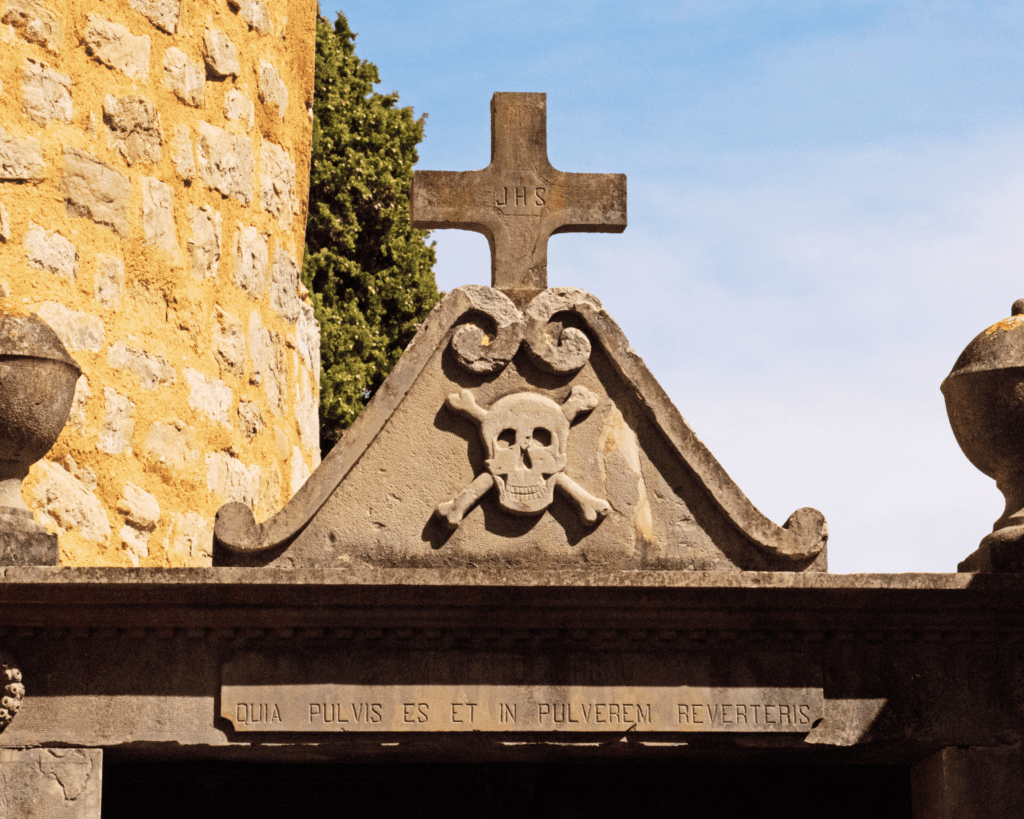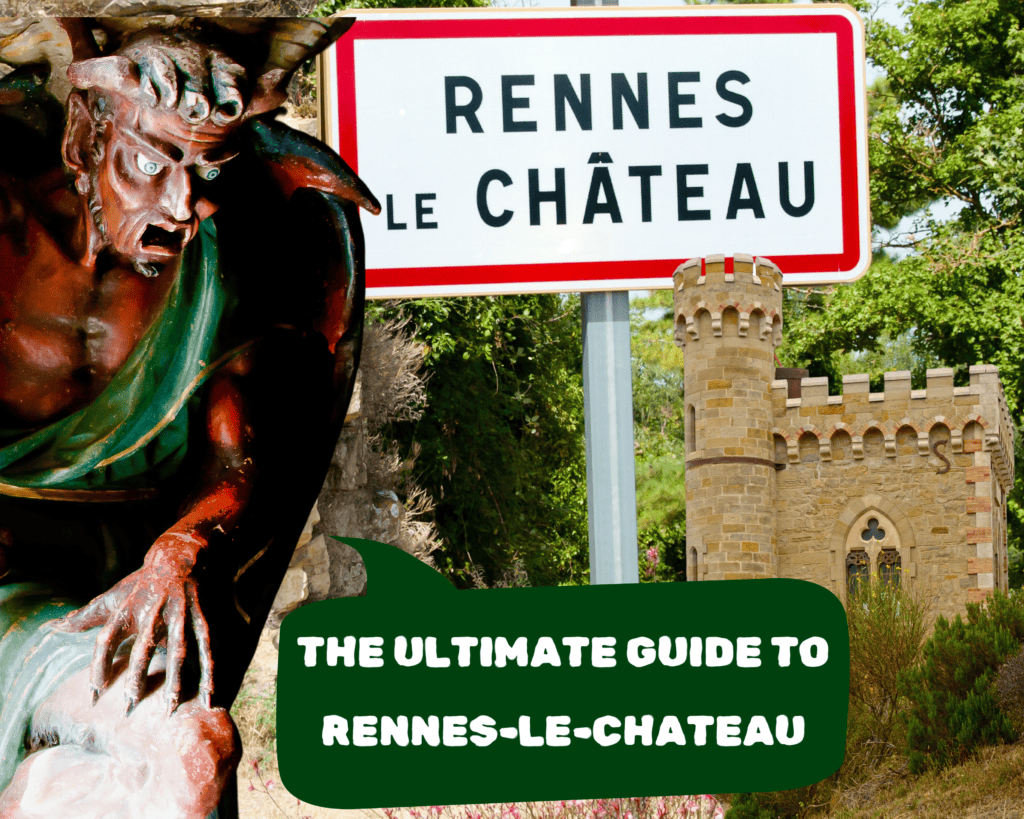The Guide to Rennes-le-Chateau
Discover the ultimate guide to Rennes-le-Chateau, including the village and l’abbé Saunière’s domain. This short but essential guide is a must-read before you visit this captivating French village.

Introduction to the Guide to Rennes-le-Chateau:
Rennes-le-Château is a small village in the Aude department in the Languedoc-Roussillon region of Southern France. Despite its small size, it has gained international fame due to various conspiracy theories and mysteries surrounding its history, mainly linked to its 19th-century priest, Bérenger Saunière. The village and its surroundings have become a pilgrimage site for treasure hunters, conspiracy theorists, and history enthusiasts alike. Here’s your ultimate guide to exploring the Rennes-le-Château mystery:
1. History:
– Medieval Origins: Rennes-le-Château has a long history, dating back to medieval times when it was a fortified settlement.
– Bérenger Saunière: The village gained prominence in the late 19th century due to its priest, Bérenger Saunière, who allegedly discovered hidden treasures or ancient secrets.
– Mystery and Intrigue: Saunière’s sudden wealth and lavish spending sparked numerous theories about hidden treasures, secret societies, and religious conspiracies.
2. Marie Dénarnaud, Bérenger Saunière’s Maid and Confidant:
– Marie Dénarnaud: Maid and confidant of Bérenger Saunière and a figure shrouded in mystery and speculation. Her role in Saunière’s life and the events surrounding Rennes-le-Château have fascinated researchers and enthusiasts of the mystery for decades. Being employed as a maid by Bérenger Saunière, she played a significant role in Saunière’s household. Some speculate that she was privy to his secrets and involved in the events that contributed to the mystery of Rennes-le-Château.
– Alleged Involvement in Saunière’s Discoveries: Some speculate that Marie Dénarnaud may have been involved in the discovery of hidden treasure or secret documents or had knowledge of their nature due to her close proximity to Saunière and her role within his household.
– Theories About Marie Dénarnaud’s Allegiances: There are theories about where Marie Dénarnaud’s allegiances may have lied. Some speculate that she was loyal to Saunière and aided him in his endeavors, while others suggest she may have had separate motivations or allegiances.
3. Abbé Jean-Jacques-Henri Boudet:
– Henri Boudet: Besides Bérenger Saunière, another character central to the intrigue is Abbé Jean-Jacques-Henri Boudet, a priest who served in the village of Rennes-les-Bains during the 19th century. His connections to the area and alleged involvement in arcane knowledge have fueled numerous theories and speculations.
– The Coded Book: He is known for his book “La Vraie Langue Celtique et le Cromleck de Rennes-les-Bains” (The True Celtic Language and the Cromlech of Rennes-les-Bains), published in 1886. In this work, Boudet delves into linguistic, historical, and esoteric subjects, which some interpret as containing hidden messages or clues.
– The True Language: Boudet’s book discusses his theories about the origins of language. He suggests a primordial “true” language from which all others derive and believed this language was preserved in specific place names and etymologies, including those of Rennes-le-Château and neighboring areas.
4. Points of Interest:
– Église Sainte-Marie-Madeleine: The village church, which Saunière renovated in an extravagant manner, is a focal point of interest. Visitors can explore its interior and see the mysterious Devil holy water stoup, the Stations of the Cross, and the altar of Mary Magdalene. Templarkey explains the style of this church in the article. Rennes-Le-Château: The Devil, Treasure & Secrets of Saunière.
– Tour Magdala, Orangey, and Villa Bethania: Saunière’s residence is now a museum (Le Musée Domaine de l’abbé Saunière) where visitors can learn about his life and the mysteries surrounding him.
– The Rennes-le-Château presbytery: This was built by a priest called Berenger Saunière.
– Surrounding Landscape: The picturesque countryside surrounding Rennes-le-Château offers stunning views and hiking opportunities.
5. Conspiracy Theories:
– Templar Connections: Some theories suggest a connection between Rennes-le-Château and the Knights Templar, with speculation about hidden Templar treasures.
– The Holy Grail: The village has been linked to the legend of the Holy Grail, with theories proposing that Saunière discovered Grail-related secrets.
– The Priory of Sion: Rennes-le-Château features prominently in the controversial Priory of Sion conspiracy theory, popularized by books like “The da Vinci Code” and the book Henry Lincoln co-wrote “The Holy Blood and the Holy Grail.” You can read more about the Priory of Sion and their infamous documents in the Templarkey article. Rennes-Le-Château: The Devil, Treasure & Secrets of Saunière. For books similar to “The Holy Blood and the Holy Grail,” Templarkey has a great article, “Fantastic Realism books from France” (this article will astound readers wanting to know the origins of the mysteries in the esoteric books we all love), in Issue 3 [April 2022] of the magazine.
6. Visiting Tips:
– Plan Ahead: Rennes-le-Château is a small village, so plan your visit accordingly, especially during peak tourist seasons.
– Guided Tours: Consider joining a guided tour to learn more about the village’s history and mysteries from knowledgeable guides. Members of Templarkey can ask the team questions about anything linked to Rennes-le-Château, helping make your visit more enjoyable.
– Respect Local Customs: Rennes-le-Château is still a functioning village, so be respectful of residents and local customs.
A Taster Video of the Village and Church
7. Accommodation and Dining:
– Local Accommodation: While limited, accommodation options exist in and around Rennes-le-Château, including Gites, guesthouses, and bed-and-breakfast establishments.
– Local Cuisine: Sample the regional cuisine of Occitanie at restaurants and cafes in the village and nearby towns. Some team members recommend Morgan’s Le Jardin De Marie (this restaurant is on Facebook).
8. Exploring Further:
– Surrounding Attractions: Explore the surrounding countryside and nearby attractions such as the Château de Blanchefort and the historic town of Carcassonne, one of the oldest Medieval cities in France.
– Cultural Events: Check local event listings for cultural festivals, art exhibitions, and other events happening during your visit.
9. Practical Information:
– Location: Rennes-le-Château is located in the Aude department of the Occitanie region in southern France.
– Access: The village is accessible by car, with paid parking nearby. Public transportation options are minimal.
– Weather: Check the weather forecast before your visit, as the climate in southern France can be extremely hot in the summer and very cold during the winter.
Conclusion of the Guide to Rennes-le-Chateau:
Rennes-le-Château offers a unique blend of history, mystery, and natural beauty, making it a fascinating destination for curious travelers. Whether you’re intrigued by conspiracy theories or appreciate stunning landscapes and medieval architecture, visiting this enigmatic village will surely be a memorable experience.
Remember to approach the mysteries of Rennes-le-Château with an open mind and a sense of adventure, and you’ll discover a destination that continues to captivate and intrigue visitors from around the world.
